How residents of border towns are suffering to protect NSW
Albury-Wodonga is the front line of NSW’s battle to stop a second wave of coronavirus devastating our state. Clare Armstrong reports on the locals already paying the price for that fight.
NSW
Don't miss out on the headlines from NSW. Followed categories will be added to My News.
A wave of fear and confusion swept through NSW border towns when it was announced that every bridge into the state would be locked down to stop a wave of coronavirus infections spreading from Melbourne.
Authorities had less than 48 hours to pull together the massive operation after an early-morning phone hook-up on July 6 between Premier Gladys Berejiklian, Victorian Premier Dan Andrews and Prime Minister Scott Morrison, when the leaders finally agreed the border should close.
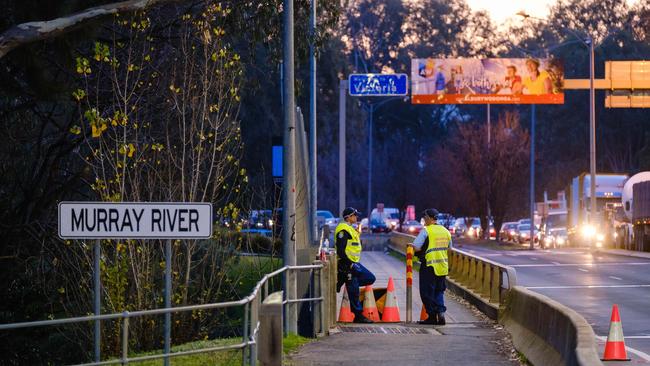
Ms Berejiklian had earlier resisted calls to do so, in large part due to concern about the impact of a lockdown on twin towns like Albury and Wodonga dotted along the border.
But now, after Victoria failed to contain several clusters of outbreaks, the border city is itself worried about a second wave of COVID-19, fuelled by cases of community transmission with unknown origin.
Daily new case reports from Victoria have been hitting triple digits in the last week, while a new phrase “seeding” — meaning the spread of the virus from one community to another — has entered the public health lexicon.
MORE NEWS
Drug, gun gangs cash in on COVID crisis
Review ‘cleared’ Police Minister without legal advice
Basketball coach charged with grooming teen girls for sex
Asked to put a number on how likely it was the virus would escape over the NSW border from Melbourne, Deputy Chief Medical Officer Dr Nick Coatsworth this week said, “100 per cent”.
But the handful of cases among the contacts of returned travellers from Melbourne aren’t necessarily the biggest concern for health authorities.
Provided those who have been in coronavirus hot spots over the past fortnight follow health orders to self-isolate, it’s the risk of underlying, as-yet-unidentified community transmission that poses the real risk.

It will be at least two weeks before officials will really know if the virus is already reproducing between low or asymptomatic carriers in the communities around southern NSW.
Along with the logistical challenges presented by the checkpoint system, NSW border residents are also experiencing a resurgence in fear about the risk of getting sick.
The first morning NSW shut the roads in, Albury locals were dismayed to find a popular cafe on the Murray River bank — metres from the state of Victoria — had reverted to “takeaway only”.
It was a shock to the system for a community that had largely been COVID-free throughout the pandemic, and expected to be increasingly enjoying the successes of NSW in suppressing the virus, rather than taking a step back.
Further inland, Murray River Council Mayor Chris Bilkey describes the situation as “organised chaos” — a necessary evil to safeguard community health at the expense of ailing border towns like Moama in NSW and Echucha in Victoria.
“Already the economic impact on Moama has been significant, we get all our tourists from Melbourne and Geelong and that has just fallen off a cliff,” he says.
“You can’t hear yourself think for cancellations coming through.”
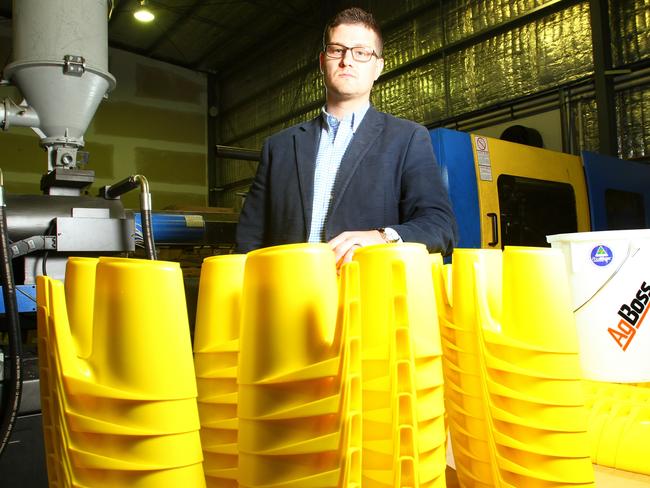
The business community at least is aware of what to expect this time around, with many able to flick the switch to deal with a more high-risk setting at short notice.
AgBoss owner Jenny Jensen says her family’s company, which manufactures plastic farming equipment in Albury, is seriously considering returning to operating the factory in two separate shifts.
At the height of the first wave of the pandemic, one team would clock on at 6am and then thoroughly sanitise the factory floor at 3pm ready for the second shift of workers who operated through to midnight.
As restrictions eased the business had reverted to its normal routine, but Ms Jensen says the company could switch back to the COVID system within a day if necessary.
“Farmers are finally on a bit of a roll with the rain so it’s important we can guarantee the supply chain if the coronavirus situation gets worse,” she says.
Her son Scott Jensen says the most important thing is minimising the impact on staff.
With a second premises at another border town down the road, he’s concerned about the pressure the COVID-19 measures are placing on their lives.
“The uncertainty does take its toll,” he says.
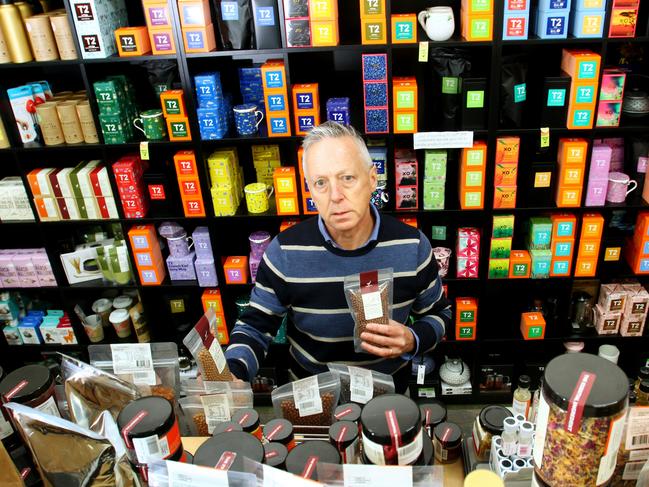
In the Albury CBD, shop owner Barry Young is grappling with the reality of losing half his customer base overnight.
His food and homewares store, The Essential Ingredient, had just started to pick up trade as the easing of restrictions breathed life into the town’s centre, but now it’s back to facing more unknowns.
“Any perishable food we have to do the orders every two weeks, but the uncertainty at the moment really impacts that,” he says.
With Wodonga residents urged not to cross over to Albury and the broader NSW community told to avoid border towns, Mr Young says the next few months will be tough.
But it’s not only business decisions impacted by the border closure.
Wodonga resident Pam Stevens is “very worried” the border measures will impact her ability to care for her elderly parents in Albury.
“I come over three or four times a week to take them to appointments, bring meals and do shopping,” she says.

What was once a 15-minute trip — easy to fit in after work or on a lunch break — can now take up to an hour with the delays caused by the border checkpoint.
Her parents Collin and Marie Roddy say they rely on their daughter and don’t want to be cut off from her.
“Pam helps us with paying bills on the computer and things, so without her here it would be a worry,” Ms Roddy says. “It seems rather unfair that we are being impacted by the Melbourne situation.”
Being left at the mercy of health officials trying to limit the impact of an incident in Melbourne is a place Albury has found itself before.
There’s a chilling symmetry with the events of the Spanish flu pandemic more than 100 years ago, and the efforts to stem the deadly COVID-19 outbreak today.
In November 1918, the federal government called a planning conference involving all the states to “agree upon a uniform scheme of operations for adoption in the event of an epidemic occurring in any part of Australia”.
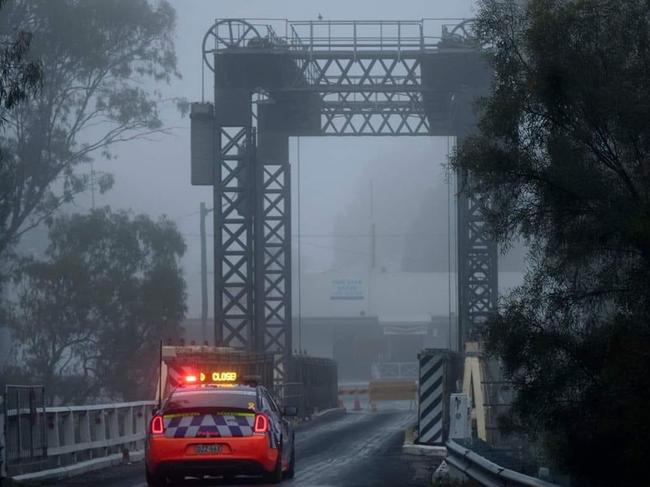
At this conference, it was decided that should a state be proclaimed as infected with the Spanish flu, the borders would be shut.
The highest risk to NSW at the time was soldiers returning from World War I, so international travellers were quarantined in Sydney to protect the community.
But in early 1919 a soldier who had recently returned from Europe travelled from Melbourne to Sydney by boat and he was then diagnosed with the flu on January 24.
Seven more people became infected, and by January 29 NSW closed the border to Victoria.
Public meetings were banned, hotels and racecourses closed, and health practitioners were given the power to restrict people’s movement, particularly those who were close contacts of a confirmed Spanish flu case.
Quarantine camps were set up in Albury where people wanting to cross the border had to stay in a tent for a week.
Wearing face masks and free inoculations became normal life for the community.
At the time one newspaper dubbed Albury the “city of the dead”, reporting people in NSW were too scared to visit.
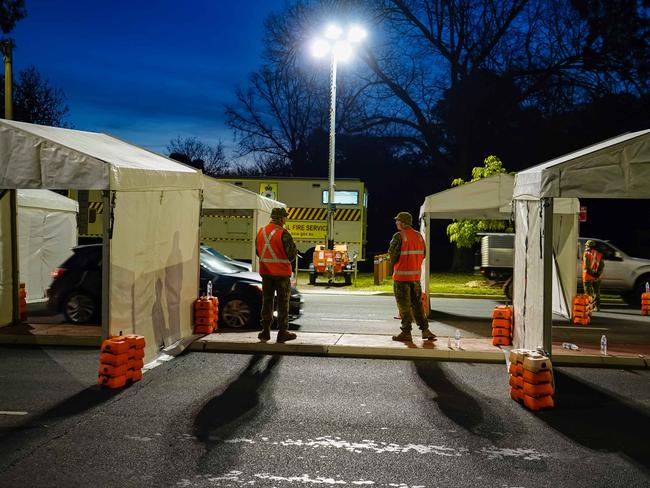
Residents in 2020 are living out a scenario in eerie parallel with their ancestors.
Albury Northside Chamber of Commerce general manager Carrick Gill-Valance is worried about the effect the Victorian outbreak could have on people’s perception of the NSW town.
“The perception of Albury when things do open up again could be that people aren’t confident or willing to come here because they see us as a hot spot,” he says.
The border closure has no end date, and those who cross from Victoria must isolate unless they carry an exemption permit.
About 650 police and 350 Australian Defence Force personnel are guarding the crossing points with road blocks, checkpoints and drones.
Dozens of NSW Police officers shiver through the freezing night shift, waving drivers up to the check point to examine their border permit, licence and supporting documents.
The cold bite of the southern winter caught many of the normally Sydney-based officers by surprise, with NSW Police Commissioner Mick Fuller on Thursday announcing a shipment of more than 2000 thermal clothes, beanies and gloves was being delivered to the border.
It’s indicative of the fluid nature of the rapid police response. Issues are identified and addressed as they arise.

Mr Fuller says it’s all in aid of protecting not just the NSW border residents, but the Victorian ones as well.
“There are some real consequences if we get this wrong for both the communities, and there’s a huge impact on the people of NSW, who have really gotten this right,” he said of the state’s ongoing relative success containing the virus.
In the wake of Australia’s success flattening the coronavirus curve, former chief medical officer Professor Brendan Murphy admitted it was the risk of a “second wave” of the disease that he feared most.
NSW is in no way in the throes of a second wave, and even nationally the rate of cases remains incredibly low comparable to international examples, such as the US which this week surpassed 3 million cases and 132,000 deaths,
But 100 years ago it was the later peaks of Spanish flu that did the most damage in Australia.
Up until the middle of March 1919, only 50 people had died across NSW, while the second wave killed 1542 and the third 4302, peaking between the end of June and early July.
Only time will tell if the decision of today’s NSW government to close the border to Victoria came soon enough to stem the flow of coronavirus from Melbourne.

